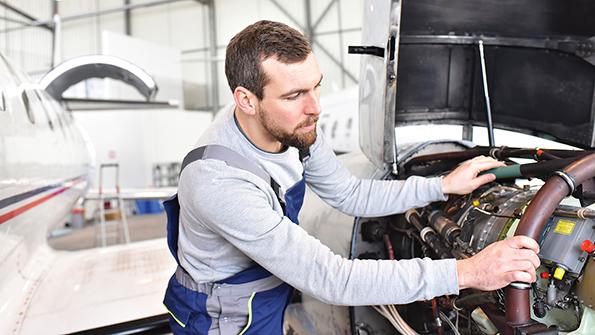Opinion: Outdated Resources Hinder Modern Aviation Technician Training

A few months ago I traveled back in time to visit the campus of the airframe and powerplant school from which I graduated and where I later taught electrical systems. It was amazing to walk through the hangar where I’d spent 19 months learning the particulars of aircraft maintenance. Forty years later, I struggle to reconcile my first excited and hopeful view of that hangar and the recent disappointing image of it with the very same 1950s aircraft on which I had trained.
Considering how far we’ve come in these four decades, I wonder how the aviation industry can accept a maintenance training system that, while functioning under the auspices of the FAA, sits idly by as technology surges forward, while continuing to train 21st-century technicians using mid-20th century airplanes.
I vividly recall the first question I was ever asked by a student in the first class I taught in 1988: “Where is the DC-10?” I was confused, to be sure, because there had never been a DC-10 at that school, and there never would be. The student then showed me the brochure for the airframe and powerplant program he’d enrolled in, and very clearly on the front was a picture of a DC-10.
Obviously this student had been horribly misled, enticed to enroll on the premise that his educational experience would be state-of the-art and filled with every modern system available to provide the training he’d need to have a successful career. The fact that I walked past the same “not-DC-10s” in that hangar in 2021 that he saw in 1988 is both sad and dangerous.
The directory of airframe and powerplant schools in the U.S., as provided through the FAA website, lists 188, which averages out to just under four schools per state. As an experienced technical educator, I know that an ideal student-instructor ratio is 12:1. Carrying the math forward, with some generous assumptions, 188 schools might have an average of six instructors, permitting a legitimate enrollment of 72 students, which would then produce just under 14,000 graduates per year.
According to the Bureau of Labor Statistics, this graduation rate would just meet the demand annually for mechanics. We might have just enough seats nationally to keep things moving forward, discounting the losses of experience and maturity in the shops.
However, very few of these schools are fully equipped with the modern equipment, tooling, systems and curricula needed to fully train a competent workforce for the next 50 years. Most schools work on shoestring budgets, with overworked and underpaid faculty using old and seriously weatherworn aircraft that have seen better days. The assertion that any aircraft that meets the minimum criteria for teaching the FAA-prescribed curriculum is acceptable is a poor argument. No state-funded community college can afford, hangar or teach using a DC-10.
The 1960s-era Cessna 150s with which I trained in 1981 might be education-worthy airplanes according to the FAA, but they are not modern passenger jets. My 30 years in classrooms across the U.S. makes it clear that the students who end up in technical classes are poorly prepared and highly impressionable, and if the airlines want high-tech technicians, they’d better start worrying about the impression that 70-year-old airplanes make on students who want a modern career in a presumably modern industry.
Faculty at all tech schools in the U.S., regardless of the industry, struggle to maintain technical competency over time. The classroom is not a place that encourages instructors to grow and advance; managing students and the associated administrative balderdash takes most of the time we have, and keeping up with new technologies is a terribly complicated problem.
Even if we’re able to fill every seat in every school with motivated students, the materials are fundamentally stagnant and being taught by well-meaning teachers who can never maintain a level of competence that keeps pace with the industry. And if the students are jaded by, or reject an opportunity because of, the lack of modern equipment on which to train, the teacher’s job is that much harder.
There are far more inherent problems involved in this topic, and they need to be addressed. We need a full accounting of seats available in existing programs, an equipment list of aircraft and systems being used in class and an accurate measure of teacher competence and staffing numbers so we can ensure quality.
The airline industry can be represented as a system with thousands of Swiss watches working in perfect synchronization, costing billions of dollars annually to keep operable. Do we really want the associated maintenance education system that trains the men and women to work on these watches using sundials?
Dan Sullivan has nearly four decades of field and classroom experience as a licensed A&P mechanic specializing in electrical theory and diagnostics.

Comments